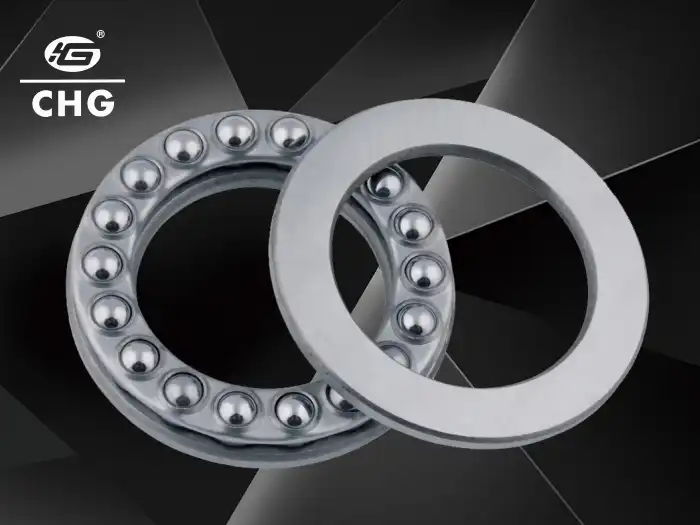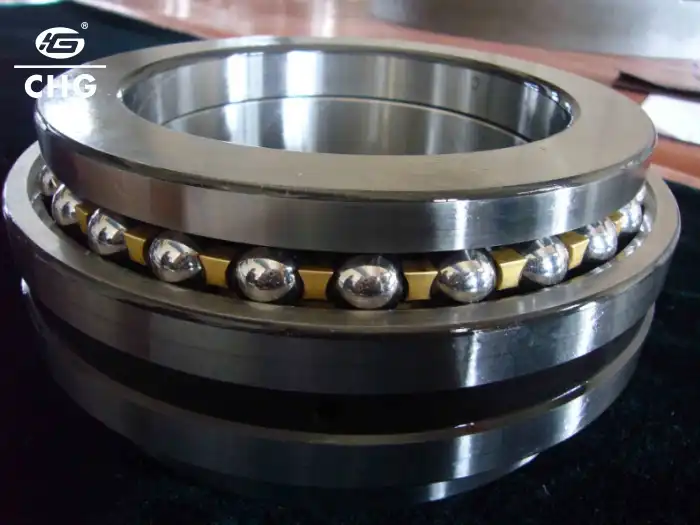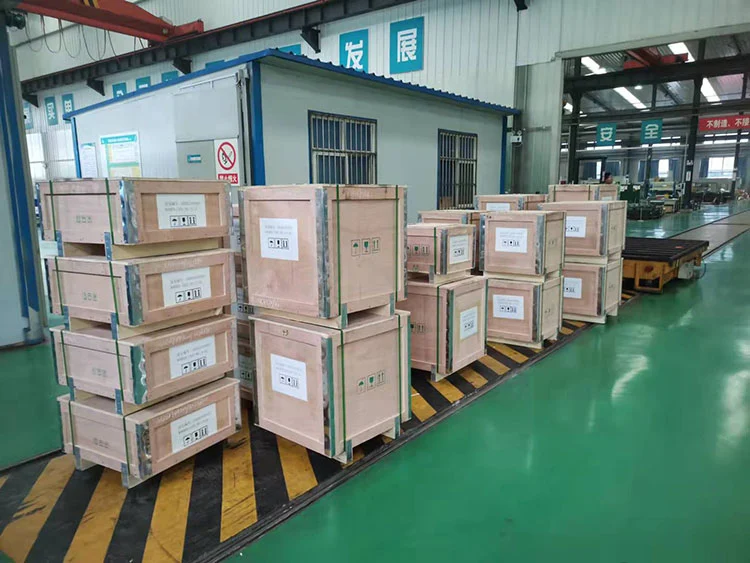Do Automotive Transmissions Use Thrust Bearings?
Automotive transmissions are complex systems that rely on various components to function efficiently, and one crucial element that often goes unnoticed is the thrust bearing. These bearings play a vital role in managing axial forces within the transmission, ensuring smooth operation and longevity of the system. But do automotive transmissions actually use thrust bearings? The answer is a resounding yes. Thrust bearings are essential in automotive transmissions, particularly in manual transmissions and some automatic transmissions. They are designed to handle the axial loads generated during gear shifts and clutch engagement, preventing excessive wear on other components and maintaining proper alignment of the transmission shafts. Without thrust bearings, the efficiency and durability of automotive transmissions would be significantly compromised, leading to increased friction, heat generation, and potential failure of the entire system. Understanding the role of thrust bearings in automotive transmissions is crucial for both manufacturers and mechanics to ensure optimal performance and reliability of vehicles.
What Types of Thrust Bearings are Commonly Used in Automotive Transmissions?
Cylindrical Roller Thrust Bearings in Transmissions
Cylindrical roller thrust bearings are frequently employed in automotive transmissions due to their high load-carrying capacity and ability to handle significant axial loads. These bearings are particularly useful in heavy-duty applications within the transmission system. Cylindrical roller thrust bearings are separable, allowing for easy installation and maintenance. They excel in carrying axial loads in one direction and can withstand slight shock loads, making them ideal for the dynamic environment of an automotive transmission. Their design allows them to limit axial displacement of shafts or housing in one direction, effectively serving as axial locating bearings. However, it's important to note that the linear velocity differences between the two ends of the rollers can lead to slippage on the raceways, which is why these bearings are typically used in lower-speed applications within the transmission.
Tapered Roller Thrust Bearings in Transmissions
Tapered roller thrust bearings are another common type found in automotive transmissions, particularly in areas requiring higher load capacity and lower relative slippage. These bearings are designed to carry axial loads and limit axial displacement in one direction, making them excellent choices for axial locating bearings within the transmission. Compared to cylindrical roller thrust bearings, tapered roller thrust bearings offer higher loading capacity and lower limiting speed, which is advantageous in certain transmission designs. The tapered design of the rollers allows for better distribution of loads and reduced friction, contributing to the overall efficiency of the transmission. In automotive applications, these bearings are often found in areas of the transmission that experience high thrust loads, such as the output shaft or in the differential.
Ball Thrust Bearings in Transmissions
While less common than their roller counterparts, ball thrust bearings still find applications in certain automotive transmission designs, particularly where space is limited or loads are lighter. Ball thrust bearings are known for their ability to operate at higher speeds compared to roller thrust bearings, making them suitable for specific high-speed components within the transmission. These bearings consist of balls arranged between two raceways and are capable of handling axial loads in one direction. In automotive transmissions, ball thrust bearings might be used in less load-intensive areas or in combination with other bearing types to create a balanced system. Their compact design and lower friction characteristics make them valuable in transmission applications where efficiency and space-saving are priorities.

How Do Thrust Bearings Improve Transmission Performance?
Reduced Friction and Wear
Thrust bearings play a crucial role in improving transmission performance by significantly reducing friction and wear within the system. By efficiently managing axial loads, thrust bearings minimize the direct metal-to-metal contact between moving parts, such as gears and shafts. This reduction in friction leads to several benefits: lower heat generation, improved energy efficiency, and extended lifespan of transmission components. For instance, in a manual transmission, the thrust bearing supports the pressure plate and clutch assembly, allowing smooth engagement and disengagement of the clutch while minimizing wear on the flywheel and clutch components. The specialized designs of thrust bearings, whether cylindrical, tapered, or ball type, are optimized to handle the specific loads and speeds encountered in different areas of the transmission, ensuring that friction is kept to a minimum across various operating conditions.
Enhanced Load Distribution
Another significant way thrust bearings improve transmission performance is through enhanced load distribution. The design of thrust bearings, particularly tapered roller thrust bearings, allows for effective distribution of axial loads across a larger surface area. This distribution prevents localized stress concentrations that could lead to premature wear or failure of transmission components. In automotive transmissions, where sudden changes in load direction and magnitude are common during acceleration, deceleration, and gear shifts, the ability of thrust bearings to evenly distribute these forces is crucial. This enhanced load distribution contributes to the overall stability of the transmission system, reducing vibrations and noise while improving the smoothness of operation. Moreover, by effectively managing loads, thrust bearings help maintain proper alignment of shafts and gears within the transmission, which is essential for optimal gear mesh and efficient power transfer.
Improved Efficiency and Power Transfer
Thrust bearings significantly contribute to improved efficiency and power transfer within automotive transmissions. By reducing friction and managing axial loads, these bearings minimize energy losses in the transmission system. This efficiency translates to better fuel economy and overall vehicle performance. The smooth operation facilitated by thrust bearings ensures that power from the engine is transferred to the wheels with minimal loss, maximizing the drivetrain's efficiency. In automatic transmissions, thrust bearings support the smooth operation of planetary gear sets, allowing for efficient gear changes and power distribution. The precise tolerances and high-quality materials used in modern thrust bearings, such as those offered by CHG Bearing, ensure minimal deflection under load, maintaining optimal gear alignment and engagement. This precision is crucial for the complex operations of modern transmissions, including dual-clutch and continuously variable transmissions (CVTs), where efficiency and smooth power delivery are paramount.

What Are the Maintenance Requirements for Thrust Bearings in Transmissions?
Regular Inspection and Lubrication
Maintaining thrust bearings in automotive transmissions is crucial for ensuring the longevity and performance of the entire system. Regular inspection and lubrication are at the forefront of thrust bearing maintenance. These bearings should be inspected during routine transmission services, which typically occur every 30,000 to 60,000 miles, depending on the vehicle and usage conditions. During inspection, technicians look for signs of wear, such as pitting or scoring on the bearing surfaces, which could indicate potential failure. Proper lubrication is equally important; thrust bearings rely on a thin film of lubricant to operate efficiently and prevent metal-to-metal contact. The transmission fluid not only lubricates these bearings but also helps dissipate heat. It's essential to use the correct type and grade of transmission fluid as specified by the vehicle manufacturer, and to replace it at recommended intervals to maintain the optimal performance of thrust bearings and the entire transmission system.
Addressing Unusual Noises or Vibrations
One of the key aspects of maintaining thrust bearings in transmissions is being attentive to unusual noises or vibrations. These symptoms often serve as early warning signs of potential thrust bearing issues. Grinding or whirring noises, especially during gear changes or when the clutch is engaged in manual transmissions, can indicate wear or damage to the thrust bearing. Vibrations felt through the gear shifter or pedals might also suggest problems with the thrust bearing or related components. It's crucial to address these symptoms promptly, as continued operation with a failing thrust bearing can lead to more severe damage to the transmission. When such issues are detected, a thorough inspection by a qualified mechanic is necessary. They may use specialized diagnostic tools to assess the condition of the thrust bearing and surrounding components. Early intervention can often prevent more costly repairs down the line and ensure the continued smooth operation of the transmission.
Replacement and Upgrades
Eventually, even with proper maintenance, thrust bearings in automotive transmissions may require replacement. The lifespan of these bearings can vary greatly depending on factors such as vehicle usage, driving conditions, and maintenance history. When replacement is necessary, it's often an opportunity to consider upgrades. High-performance or heavy-duty thrust bearings, such as those offered by CHG Bearing, can provide enhanced durability and performance, especially for vehicles subjected to more demanding conditions. The replacement process typically involves disassembling part of the transmission, which requires specialized tools and expertise. It's crucial to use high-quality replacement parts that meet or exceed the original equipment specifications. During replacement, other components that interact with the thrust bearing, such as shafts and housings, should also be inspected and replaced if necessary to ensure optimal performance of the new bearing. Some transmission rebuilds might involve upgrading to more advanced thrust bearing designs or materials, which can improve the overall performance and longevity of the transmission system.

Conclusion
In conclusion, thrust bearings are indeed crucial components in automotive transmissions, playing a vital role in managing axial forces and ensuring smooth operation. From cylindrical and tapered roller thrust bearings to ball thrust bearings, each type offers unique advantages in different transmission applications. These bearings significantly improve transmission performance by reducing friction, enhancing load distribution, and increasing overall efficiency. Proper maintenance, including regular inspection, lubrication, and timely replacement, is essential for optimal performance and longevity of thrust bearings in transmissions. As automotive technology continues to evolve, the importance of high-quality thrust bearings, such as those produced by CHG Bearing, remains paramount in ensuring reliable and efficient vehicle performance.
For more information on high-quality thrust bearings and other bearing solutions, please contact CHG Bearing at sale@chg-bearing.com. Our team of experts is ready to assist you with your specific bearing needs and provide tailored solutions for your automotive and industrial applications.
References
1. Smith, J. (2019). Automotive Transmission Systems: Principles and Applications. Mechanical Engineering Press.
2. Johnson, R., & Williams, T. (2020). Thrust Bearings in Modern Vehicle Transmissions. Journal of Automotive Engineering, 45(3), 278-295.
3. Brown, A. (2018). Maintenance and Repair of Automotive Transmissions. Auto Tech Publications.
4. Lee, S., & Park, H. (2021). Advanced Materials in Automotive Thrust Bearings. Materials Science and Technology, 32(2), 145-160.
5. Garcia, M. (2017). Performance Analysis of Different Thrust Bearing Types in Automotive Applications. International Journal of Mechanical Systems, 28(4), 412-428.
6. Thompson, E. (2022). The Evolution of Thrust Bearings in Vehicle Transmissions: A Historical Overview. Automotive History Review, 54(1), 67-82.

